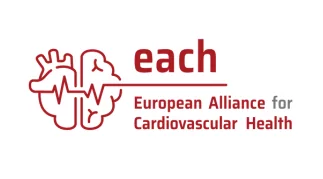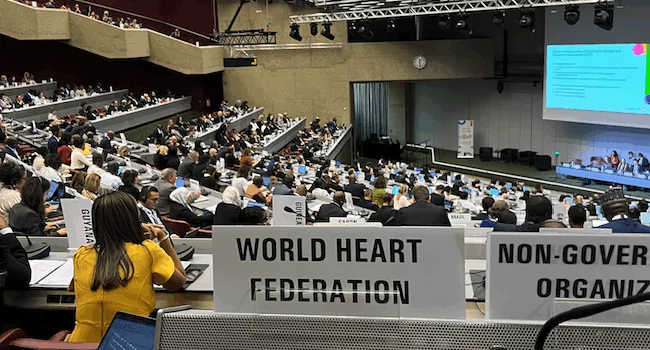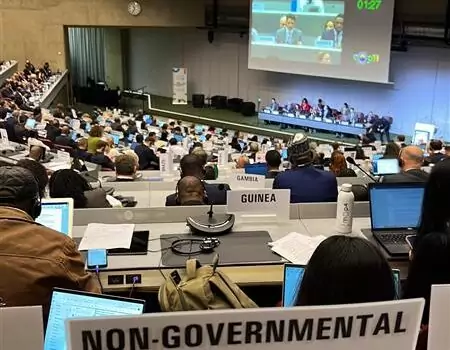An interview with WHF CEO Jean-Luc Eiselé

At the end of this year, the WHF strategy 2018-2020 is coming to an end.
It is a challenging time for everyone, for our Members, and in particular for those involved directly in the fight against COVID-19, not just in clinical practice, but also in hospital management and public health services. It is also a challenging time for our foundation Members who are struggling to sustain their fundamental activities when all attention is focused somewhere else. As a global organization, we have experienced through our Members the spread of the virus from country to country, and we have helped share best practice, learning from each other, ensuring that none of our Members is left behind.
Looking back, what do you think has been your biggest achievement?
The Members engagement with WHF through the creation of Committees and Working Groups. One of the key messages from the 2017 Membership Survey was the strong wish of the CVD community to be more engaged and involved in WHF programmes and activities. An organization such as WHF exists essentially for our Members and with our Members. Through the creation of the Advocacy Committee and later the Science Committee and various Expert Groups on Tobacco, Air Pollution, Neglected Cardiovascular Diseases and the WHD Advisory Group, we have involved over 50 volunteers from 30 different countries.
Your overall goal is heart health for everyone; how do you assess WHF’s and its Members’ progress on that journey?
This is an endless journey, and there is progress but also setbacks. In developed countries, heart health has improved on a global scale, through medical management of CVD conditions, but also through reduction of risk factors. Our community has been highly engaged in the fight against tobacco and we should be proud to see a reduction in smoking. But the rise of CVD in other parts of the world is troubling. This is very often linked to lifestyle changes which lead to increased obesity and CVD, combined with a poor access to treatment and medical care. Our Members in these regions need WHF support, both at the global level working with WHO, and at the local level through policy changes based on WHF’s CVD Roadmaps.
What has been the most defining moment for WHF over the last two years? (pre-COVID-19)
The Board discussion in 2017 was definitely a memorable moment: the discussion about our Mission refocusing on inequity worldwide and not limited to low- and middle-income countries, our refined focus on advocacy and the decision to change our congress model have been key in readdressing WHF objectives. Our Congress partnerships with ESC Congress in 2019 and then ACC in 2020 have also been very rewarding. For the first time in decades, the World Congress of Cardiology returned to Europe and the United States, with the full support of our Strategic Partners.
What are the steps for creating and adopting the Strategy for the next cycle?
The strategy will be developed in three steps. The first step will focus on data collection, starting with an evaluation of the 2017-2020 Strategic Plan, a survey to our Members, and important background research by the office. This information will be analysed and pre-digested by the Working Group in preparation for the second step – the Board meeting in September. The Board should identify how we, as a global CVD community, can move towards our goal of heart health for everyone, and what our priorities should be, through a careful selection of topics and programmes.
How are you managing this in the current unprecedented situation?
It is even more important under the current circumstances to have clear goals and a vision for the future. Obviously, the current priority for policymakers and the media is not CVD. But there are also clear links between COVID-19 and CVD, both as risk factors and as outcomes. Our strategy has been based on empathy, support, compassion, but also on the reinforced need to prevent and address CVD worldwide. The message Use ❤ to fight Covid is the perfect translation of our mission.
How will the 2021-23 strategy differ?
I would not anticipate the decisions of the Board and the leadership. It is an important step for the incoming President to bring to our Board and Members his or her vision and plans for WHF. The current situation is an opportunity to really focus on our core mission, what we bring to the community which is unique and valuable. There will of course be changes and adjustments to our current plans and we will need to be even more agile and flexible. The support to membership and our role on global advocacy will certainly be at the core of our future strategy.
How do you see the organisation evolving and how is the context changing globally?
Over the last years, we have been moving away from being an organization historically focused on a congress for cardiologists. We have rapidly evolved into an organization focused on communication and advocacy. The current situation and the increased use of technologies will make this move even more obvious and vital for WHF. It will become even more crucial that no Member is left behind in this rapidly changing environment.


